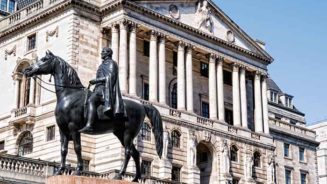Figures published by HM Revenue and Customs (HMRC) today (19 July), show that inheritance tax receipts hit £2.1bn from April to June 2024/25 tax year. This is £83m higher than the same period in the previous tax year, and continues the upward trajectory over the last two decades. Last full tax year it raised £7.499bn.
Experts as always have provided insights on this latest data, including Nicholas Hyett, investment manager at Wealth Club who said: “Inheritance tax remains a political hot potato. The new government has promised not to raise a whole host of taxes, but inevitably there are spending pledges that need to be met. That means those taxes that haven’t been officially ringfenced, including inheritance tax, are firmly in the spotlight.
“Reforms to non-dom rules are one potential source of an inheritance tax windfall, but with an estimated £100 billion being passed on in inheritances and gifts in the UK each year, there’s probably more in play if the government is determined to raise extra cash.
“That puts agricultural and business relief in the firing line. But, reforms need to be handled sensitively. Abolishing either completely would be devastating to family owned businesses and farms across the country, while reliefs for the AIM market, Enterprise Investment Scheme and Seed Enterprise Investment Scheme provide vital funding for Britian’s smaller companies. The optimum tax system should focus on the behaviours it encourages as well as the revenues it generates.”
Rosie Hooper, chartered financial planner at Quilter Cheviot said: “The latest HMRC tax receipts reveal a significant increase in inheritance tax (IHT) and PAYE income tax and national insurance payments for May to June 2024. Inheritance tax receipts have risen to £2.1 billion, which is £83m higher than the same period last year. This increase continues the strong upward trajectory in IHT receipts over the last few years.
“Frozen tax thresholds, which show no sign of thawing under Labour, have failed to keep up with inflation leading to a continuous spike in the IHT take. The current £325,000 nil rate band has remained unchanged since 2009. The residence nil rate band, introduced on a phased basis between 2017 and 2020, potentially provides an additional £175,000 nil rate band, making a total of £500,000, subject to certain rules. Both thresholds are intended to be frozen until 2028.
“The Office for Budget Responsibility predicts that by 2028-29, the proportion of deaths leading to the payment of inheritance tax will increase to 6.3% – its highest level since the 1970s, having fluctuated between 2% and 6% for the past forty years. Given these projections, the need for expert financial planning remains crucial. Financial planners can help manage an estate by setting up trusts, making use of gift allowances, and using a pension to pass on wealth to family members in a tax-efficient way.”
Laura Hayward, tax partner at professional services and wealth management firm Evelyn Partners, said: “With the baby boomer generation now hitting their sixties and seventies, some of that generation’s accumulated wealth is being passed on to children and grandchildren, and getting taxed on the way. The ‘great wealth transfer’ is also underway because many of the older, weather generations are making lifetime gifts to their families. As the wave of inheritance is set to grow over the next 30 years to a transfer of £5.5trillion, the temptation for successive Governments will be to tap into it to plug gaps in the public finances.
“One think-tank economist has already urged the new Chancellor to consider bringing defined benefit pension pots into the remit of IHT, ahead of Rachel Reeves’ first big fiscal statement, expected in October.[2] The first Budget from a Labour Chancellor in 14 and a half years will be closely watched for any review into IHT reliefs, or suggestion that pension pots could be deemed part of a deceased’s estate.
“The only reference to IHT in this year’s Labour manifesto concerned offshore trusts and non-doms, so it would raise eyebrows if the new Government made a move on IHT just months into their term. Back in March 2010, in the last Labour Budget, the late Alistair Darling said he was freezing the £325,000 IHT Nil Rate Band for another four years – a policy that remained in place under Tory-led Governments ever since, and which has helped the Treasury to tap into more family assets without any unpopular IHT crack-down.”
Stephen Lowe, group communications director at retirement specialist Just Group, commented: “Every quarter we continue to see inheritance tax raising ever more money for the government and the trend looks set to continue. Frozen thresholds and property prices are expected to keep tipping more estates over the threshold, generating growing revenues for the Treasury.
“For people who think they may be affected by IHT we recommend they regularly review the entire value of their estate, including obtaining an up-to-date valuation of their property. Speaking with a professional, regulated adviser will then help in understanding how to legitimately manage exposure to the tax.”
Tim Snaith, Partner at Winckworth Sherwood, said: “IHT revenues continue to steadily rise due to the prolonged freeze on IHT thresholds. The nil-rate band (NRB) and the residence nil-rate band (RNRB) have not been adjusted for inflation or rising property values, which means more estates are becoming liable for the tax as asset values increase. It remains a persistent and unavoidable inheritance tax planning issue, and one that should not be ignored. To avoid unexpected financial burdens, it is crucial for individuals to regularly review their wills and estate planning, with professional legal advice, to manage their wealth efficiently.”





